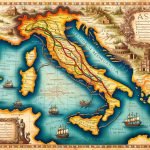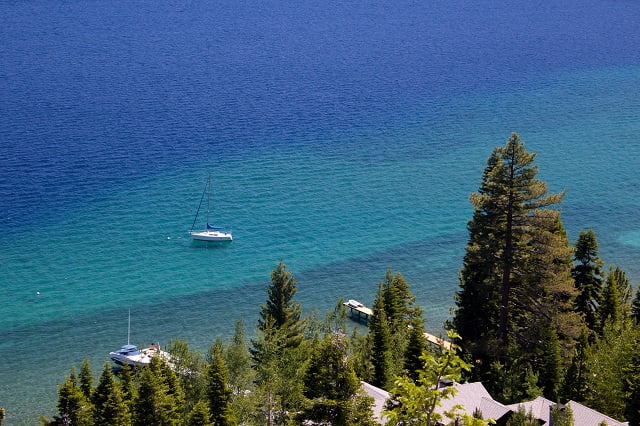Peter Paul Rubens, a renowned Flemish artist, is widely recognized for his Baroque-style paintings and influential impact on the art world. Born in Northern Europe, Rubens’ artistic journey took him to Italy where he honed his skills and gained inspiration from the Italian art and culture. His travels across Europe played a significant role in shaping his artistic style and leaving a lasting legacy in the art history.
Born in 1577 in Siegen, Germany, Rubens spent most of his childhood and early education in Antwerp, Belgium. He received formal training as an artist and scholar before embarking on a journey that would ultimately transform the course of his career. The decision to travel from Northern Europe to Italy marked a pivotal moment in Rubens’ life, as it exposed him to new artistic influences and cultural experiences that would greatly impact his work.
During his time in Italy, Rubens encountered the works of great masters such as Michelangelo and Raphael, which deeply influenced his artistic development. The exposure to Italian art and culture not only broadened his artistic horizons but also contributed to the evolution of his signature style. This transformative period played a crucial role in shaping the future trajectory of Rubens’ career, as well as leaving an indelible mark on the Northern European artistic scene upon his return.
Early Life and Education in Northern Europe
Peter Paul Rubens, one of the most celebrated and influential Baroque artists in history, was born in 1577 in Siegen, Westphalia. After his father’s death, his family moved to Antwerp, where he received his early education. Showing an early talent for art, Rubens studied Latin and humanities at the renowned Jesuit school and received early training as a painter.
In 1598, Rubens began his formal artistic education by entering the studio of Tobias Verhaecht. He then went on to study under Adam van Noort and shortly after with Otto van Veen. During this time, he also spent eight years as a court artist in Italy under Duke Vincenzo I Gonzaga of Mantua. This period would greatly shape his artistic style and technique.
During this time, northern Europe was heavily influenced by the Mannerist style of artwork from Italy. The Mannerists were known for their elongated figures and complex compositions which had a profound impact on Rubens’ early work. This period not only contributed to the development of his artistic style but also instilled within him an admiration for Italian art and culture.
With such a strong foundation laid out in Northern Europe, it is no wonder that Peter Paul Rubens chose to travel to Italy later in life to further immerse himself in its rich artistic tradition.
Artistic Influences in Northern Europe
Before his journey to Italy, Peter Paul Rubens had already been influenced by the artistic styles prevalent in Northern Europe during the 16th and 17th centuries. These influences played a crucial role in shaping his early artistic development and laying the foundation for his future work. Some of the key artistic influences in Northern Europe that shaped Rubens’ early career include:
1. Flemish Baroque Art: The vibrant and dramatic style of Flemish Baroque art, characterized by its rich colors, dynamic compositions, and emotional intensity, had a profound impact on Rubens’ artistic sensibilities. Artists such as Pieter Bruegel the Elder and Jan Brueghel the Elder were particularly influential in shaping Rubens’ early style.
2. Religious Paintings: The religious fervor and deep spirituality that permeated Northern Europe during this period also left a lasting impression on Rubens’ work. He was exposed to a wide range of religious paintings, altarpieces, and devotional art, which instilled in him a deep appreciation for the power of religious imagery and symbolism.
3. Humanism and Classical Antiquity: The humanist ideals of the Renaissance, coupled with a renewed interest in classical antiquity, also influenced the artistic milieu in Northern Europe. Artists like Rubens were drawn to the revival of classical themes, myths, and legends that were prevalent during this time.
These early artistic influences in Northern Europe laid the groundwork for Rubens’ future artistic endeavors and would continue to shape his work even after he traveled to Italy.
After gaining exposure to these diverse influences in Northern Europe, Peter Paul Rubens traveled from northern Europe to Italy where he would experience an entirely new set of artistic traditions and cultural influences that would further impact his evolution as an artist.
The Decision to Travel to Italy
In his early 20s, Peter Paul Rubens made a momentous decision to travel from Northern Europe to Italy. The young artist had already established himself as a talented painter in his hometown of Antwerp, but he felt a strong pull towards the artistic and cultural center of the world at that time – Italy. It was a decision that would shape his career and influence the course of Baroque art for generations to come.
Rubens’ decision to travel to Italy was motivated by a desire to study and be inspired by the works of the Italian Renaissance masters. He longed to immerse himself in the rich history and traditions of Italian art, hoping to further develop his own style and techniques. This journey marked a pivotal point in Rubens’ artistic evolution, as he sought not only to learn from the great masters but also to absorb the vibrant atmosphere and cultural heritage of Italy.
During his time in Italy, Rubens studied the works of renowned artists such as Michelangelo, Raphael, and Caravaggio. He was particularly drawn to the dynamic compositions, dramatic use of light and shadow, and emotional intensity displayed in their paintings. These influences would leave an indelible mark on Rubens’ own artistic style, as he incorporated these elements into his later works with remarkable skill and innovation.
To this day, the decision made by Peter Paul Rubens to travel from Northern Europe to Italy remains significant in understanding his artistic development. The impact of Italian art and culture on his work during this period cannot be overstated, demonstrating how travel can profoundly shape an artist’s creative vision and contribute to the broader narrative of art history.
Experience and Impact of Italian Art and Culture
After the early years of his artistic career in Northern Europe, Peter Paul Rubens made a pivotal decision to travel to Italy, a move that had a profound impact on his art and legacy. During his time in Italy, Rubens was exposed to the rich history, culture, and art of the Italian Renaissance, which significantly influenced his artistic development.
While in Italy, Rubens had the opportunity to study the works of renowned Italian artists such as Leonardo da Vinci, Michelangelo, and Raphael. These masters of Italian art had a profound impact on Rubens’ style and technique. The grandeur and dynamism of Italian Baroque art also left a lasting impression on Rubens, shaping the evolution of his own artistic style.
During his time in Italy, Rubens immersed himself in the classical heritage and ancient ruins that surrounded him. The influence of classical art and mythology can be seen throughout much of his work. The vibrant colors, dramatic compositions, and emotional intensity seen in many of his Italian-influenced pieces reflect the impact that this period had on his artistic vision.
Overall, Rubens’ experience in Italy played a crucial role in shaping his artistic style and approach. His exposure to Italian art and culture laid the foundation for the evolution of his unique Baroque style, which would go on to have a profound impact on the art world for generations to come.
- Impactful exposure to works by Leonardo da Vinci, Michelangelo, & Raphael
- Influence of Italian Baroque art on Ruben’s style & technique
- Immersion in classical heritage & ancient ruins
Artistic Development and Evolution of Style
After traveling from Northern Europe to Italy, Peter Paul Rubens experienced a significant evolution in his artistic development and style. This period of travel and exposure to Italian art and culture had a profound impact on Rubens’ work, influencing him in many ways.
Italian Baroque Influence
During his time in Italy, Rubens was heavily influenced by the work of Italian Baroque artists such as Caravaggio and Michelangelo. He incorporated aspects of their dramatic lighting, emotional intensity, and dynamic compositions into his own style. This marked a departure from the more restrained and formal approach to art that was prevalent in Northern Europe at the time.
Use of Color and Composition
Rubens’ exposure to Italian art also led to a shift in his use of color and composition. He began to employ richer, more vibrant colors, inspired by the palette of the Italian Renaissance masters. Additionally, he adopted a more dynamic and energetic compositional style, reflecting the influence of Italian Mannerist artists.
Human Anatomy and Movement
One of the most significant impacts of Rubens’ time in Italy was seen in his depiction of human anatomy and movement. After studying classical sculptures and the work of ancient Greek and Roman artists, he gained a deeper understanding of human form and movement, which is evident in the naturalistic poses and gestures found in his later work.
Overall, Peter Paul Rubens’ travels from Northern Europe to Italy played a crucial role in shaping his artistic development and paving the way for his future success as one of the most influential Baroque painters. The fusion of Northern European traditions with Italian influences resulted in a unique style that left an indelible mark on art history.
Return to Northern Europe and Influence on Local Artistic Scene
After spending eight years in Italy, Peter Paul Rubens returned to his homeland in Northern Europe in 1608. His time in Italy greatly influenced his artistic style and approach, and upon returning home, he made a significant impact on the local artistic scene.
Impact on Local Artists
Upon his return to Northern Europe, Rubens brought with him the knowledge and skills he acquired during his time in Italy. He introduced new artistic techniques, such as the use of chiaroscuro and dynamic compositions, which had a profound influence on local artists. Many aspiring painters sought out Rubens for guidance and mentorship, leading to the rise of a distinct “Rubenesque” style within the region.
Commissions and Collaborations
Rubens’ reputation as a masterful artist preceded him upon his return to Northern Europe, leading to numerous commissions from local churches, nobility, and other wealthy patrons. His expertise in religious paintings and allegorical compositions made him a highly sought-after artist. Additionally, he collaborated with other painters and sculptors in the region, leading to artistic exchanges that further enriched the local art scene.
Educational Contributions
In addition to creating monumental works of art, Rubens also played a significant role in fostering artistic education within Northern Europe. He established an influential studio where he trained numerous apprentices who went on to become successful artists in their own right.
Rubens’ emphasis on expressive brushwork and emotional storytelling left an indelible mark on the future generations of artists in the region. Overall, his return from Italy left an enduring imprint on the local artistic scene that would shape its development for decades to come.
Legacy and Influence of Rubens’ Travels on Art History
In conclusion, the travels of Peter Paul Rubens from Northern Europe to Italy had a profound impact on his artistic development and subsequently, the course of art history. After completing his education and gaining artistic influences in his home region, Rubens made the decision to travel to Italy in order to further expand his artistic knowledge and skills.
His experiences in Italy were transformative, exposing him to the works of renowned Italian artists and immersing him in the rich culture of the Italian art scene.
The impact of Italian art and culture on Rubens’ work was significant, as he absorbed elements of classical art, architecture, and style that would later become evident in his own paintings. This period of exposure to Italian art played a pivotal role in shaping Rubens’ artistic evolution by ultimately influencing his distinctive style and approach to painting.
Upon returning to Northern Europe, Rubens brought with him a wealth of knowledge and inspiration from Italy, which greatly influenced the local artistic scene and contributed to the broader development of art history.
As a result of his travels and the subsequent influence on his work, Rubens left behind a lasting legacy that continues to shape art history. His integration of Italian techniques into Northern European art had a profound impact on subsequent generations of artists.
The legacy of Rubens’ travels extends beyond his own paintings, as it also paved the way for future artists to draw on a diverse range of artistic influences from different regions. Overall, Peter Paul Rubens’ journey from Northern Europe to Italy not only shaped his own career but also left an indelible mark on art history as a whole.
Frequently Asked Questions
Did Rubens Travel to Italy?
Yes, Rubens did travel to Italy. It was a significant trip that greatly influenced his artistic style and development. He spent eight years in Italy, mainly in Rome.
Where Did Peter Paul Rubens Travel?
While he traveled to several places in Italy, Rubens spent the majority of his time in Rome. There, he studied the works of the great Italian masters and immersed himself in the artistic culture of the city. This experience had a profound impact on his own work.
What Movement Was Peter Paul Rubens?
Peter Paul Rubens was associated with the Baroque movement. His art is often seen as a prime example of this style, known for its dramatic use of light and shadow, rich colors, and emotional intensity. Rubens’ work is synonymous with the Baroque period.

I’m a passionate traveler, writer, and Italophile. My fascination with Italy’s history, art, and culture has led me on countless adventures across the Italian landscape. Through “I Live Italy,” I share my love for this extraordinary country and aims to inspire others to explore its boundless beauty.





